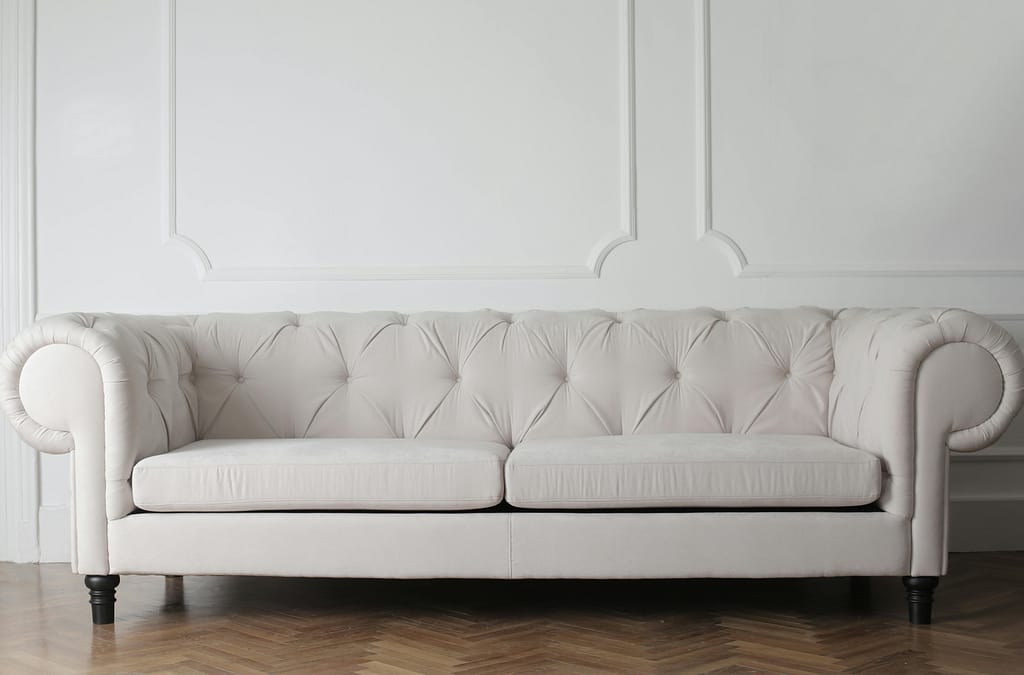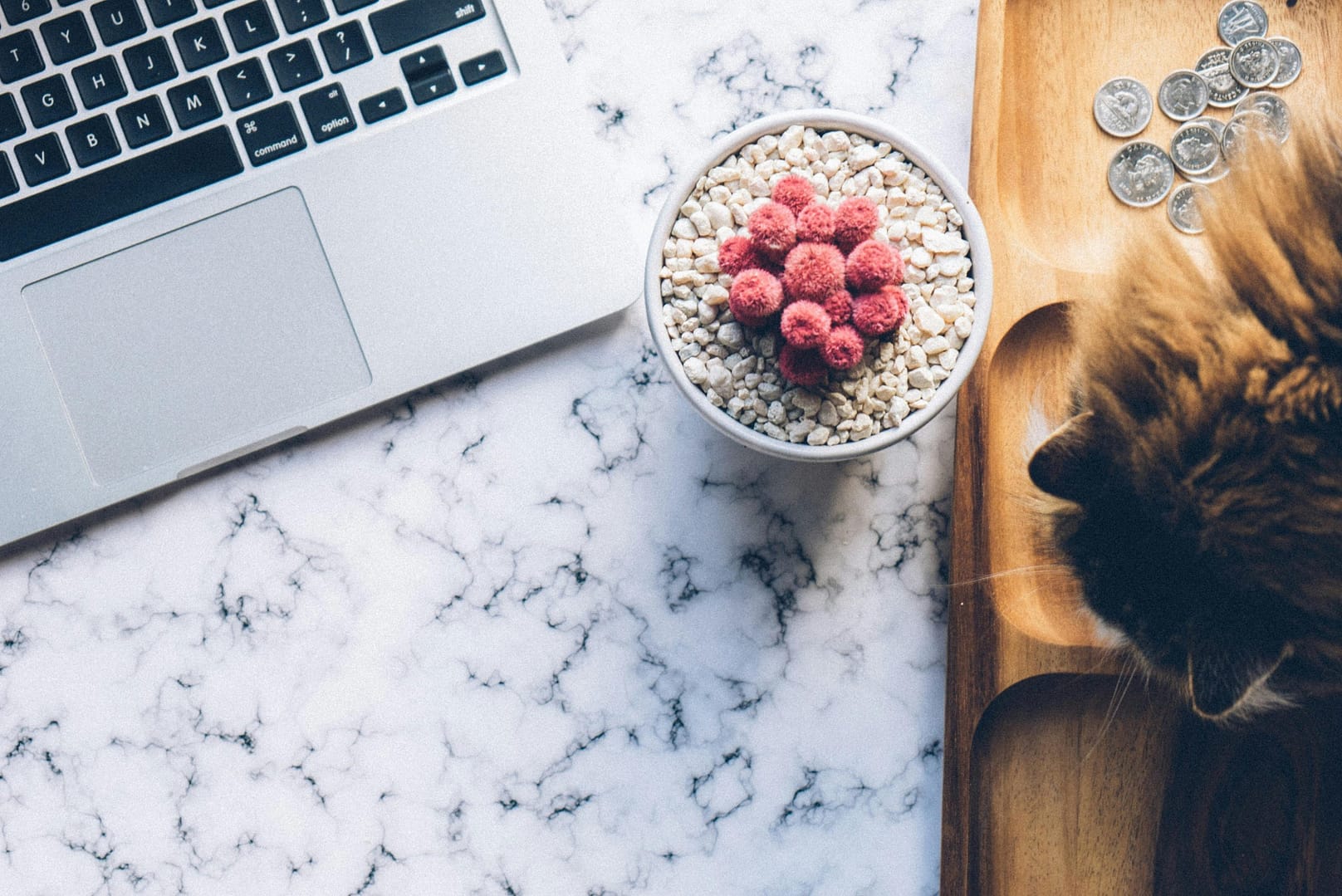
Making the switch to healthy products can feel a little like standing at the edge of a very overwhelming, very expensive cliff. The good news? Non-toxic swaps aren’t urgent—and most changes can be made slowly, intentionally, and without selling your couch on Facebook Marketplace (yet).
Speaking of couches—let me take you back to a deceptively normal Tuesday night, when I discovered mine might be poisoning me. Yep. Poisoning.
It started with an innocent late-night Pinterest scroll (insomnia and perimenopause: the dynamic duo), and suddenly I was 47 tabs deep into articles about flame retardants. One rabbit hole later, I’m side-eying every cushion in my house and googling “non-toxic sofas that don’t cost $4,000.”
Fast forward to now, and I’m swapping everything from my dish soap to my mattress. But hear me out—you don’t need to burn your couch in a dramatic detox ritual. I’m sharing my 5 favorite non-toxic swaps to help you ease into low-tox living without the overwhelm, the panic purge, or the guilt.
This isn’t about perfection. It’s about progress—and breathing easier while you do it. Literally. Let’s get real about what’s actually worth swapping first and what can wait, so you can prioritize your health without the panic spiral or the price tag.
Why Switch to Non-Toxic Products?
Many everyday household and personal care products contain harmful chemicals linked to health concerns like hormone disruption, respiratory issues, and skin irritation. Research from the Environmental Working Group (EWG) has shown that prolonged exposure to toxic chemicals can contribute to long-term health risks (EWG Guide). Switching to safer alternatives reduces long-term exposure to these toxins, leading to a healthier home environment.
Worth the Swap: High-Impact Changes
Some products have a higher risk of exposure to harmful chemicals, making them the best place to start your non-toxic journey. Here are the top swaps that make a big difference:
|
Category |
Why It Matters |
Better Option |
Shop |
|---|---|---|---|
|
Cleaning Products |
Contains ammonia, bleach, phthalates — linked to asthma, allergies, hormone disruption (American Lung Association) |
Use plant-based brands or DIY with vinegar, baking soda, essential oils | |
|
Cookware |
While declining in use, non-stick pans contain PFAS (“forever chemicals”) that can leach into food — linked to cancer, immune harm (EPA) |
Switch to stainless steel, cast iron, or ceramic cookware | |
|
Skincare & Beauty |
Often contain parabens, synthetic fragrances, preservatives — linked to hormone disruption, skin irritation (EWG Skin Deep) |
Use clean, organic brands free from synthetic additives | |
|
Water Bottles & Storage |
Plastic can leach BPA, especially when heated — linked to endocrine disruption, developmental issues (NIH) |
Use glass or stainless steel water bottles and storage containers | |
|
Laundry Detergent |
Contains synthetic fragrances, brighteners, surfactants — cause skin irritation, allergies, hormone disruption (Ecology Works) |
Choose plant-based, fragrance-free detergents like Molly’s Suds, Branch Basics, or Seventh Generation |
Not Worth the Swap (Right Away)
Some swaps don’t have as significant an impact on health or may not be as urgent to replace. Not sure about you, but I certainly can’t afford to replace my current sofa. If you’re on a budget, these are areas where you can switch gradually or only if needed:
|
Category |
Why It’s Lower Priority |
Better Option (if needed) |
|---|---|---|
|
Furniture & Mattresses |
May contain flame retardants & VOCs, but replacements are expensive; prioritize air purifiers & bedding first (EWG) |
Add air purifiers, invest in non-toxic bedding over time |
|
Electronics |
Contain flame retardants, but exposure is minimal; EMFs may be more concerning | |
|
Light Bulbs |
LEDs may contain trace heavy metals, but household risk is low |
No urgent need to replace |
|
Non-Essential Beauty |
Products used infrequently (e.g. hair spray, perfume) have lower exposure risk than daily-use items |
Prioritize daily-use products first |
|
Clothing |
Some fabrics have pesticides or dyes, but not critical unless highly sensitive |
Wash new clothes before wearing; replace slowly if desired |
My 5 Favorite Non-Toxic Swaps
1. Swap: Synthetic Fragrance for Essential Oils or Unscented Products
Why It’s Toxic:
Synthetic fragrance might as well be code for “chemical soup.” It can contain hundreds of undisclosed chemicals—some linked to hormone disruption, allergies, asthma, and even cancer. One of the biggest offenders? Phthalates, which help fragrance “stick” and last longer.
Studies show:
- Phthalates disrupt endocrine function
- Synthetic fragrances can contribute to indoor air pollution and respiratory issues (Environmental Health Perspective)
Easy Swap:
- Switch to essential oil-based room sprays, candles, or diffuser blends- keep in mind your pets when using any essential oils or sprays in your home. They are affected by these items even more than we are, so this non-toxic swaps might be toxic to them.
- Choose fragrance-free laundry and skincare products
What’s one product you use daily that has “fragrance” listed on the label?
2. Swap: Plastic Food Storage for Glass or Stainless Steel
Why It’s Toxic:
Plastic containers often contain BPA, BPS, and phthalates, which can leach into your food—especially when heated. Even “BPA-free” isn’t always safe, since BPS (its popular replacement) might be just as bad.
Studies show:
- BPA exposure is linked to fertility issues and metabolic disease
- Heat increases chemical leaching in plastic food storage (IMCJ)
Easy Swap:
- Replace your go-to food containers with glass (with silicone lids!)
- Bring your own stainless steel lunchbox or water bottle to work
Are you reheating leftovers in plastic? How often could you switch to glass instead?
3. Swap: Conventional Couch for Greenguard Gold Certified Furniture (or a Non-Toxic Slipcover)
Why It’s Toxic:
Many couches are treated with flame retardants, stain-resistant chemicals, and formaldehyde-releasing adhesives. These can off-gas for years, contaminating the air in your home.
Studies show:
- Flame retardants are linked to cancer, thyroid disruption, and developmental delays (NIEHS)
- VOCs from furniture contribute to poor indoor air quality (EPA)
Easy Swap:
- Invest in Greenguard Gold or GOTS-certified furniture when possible
- Can’t replace your couch? Add an organic cotton slipcover and HEPA filter to your space
If your couch could talk, what secrets (and chemicals) would it spill?
4. Swap: Non-Stick Cookware for Cast Iron or Stainless Steel
Why It’s Toxic:
Traditional non-stick pans are coated with PFAS (a.k.a. “forever chemicals”). These don’t break down in the environment—or your body. PFAS exposure is associated with cancer, liver damage, immune dysfunction, and thyroid issues.
Studies show:
- PFAS chemicals persist in human blood and disrupt hormone levels (EPA)
- Non-stick cookware can release fumes when overheated (EPA)
Easy Swap:
- Use cast iron, stainless steel, or ceramic-coated pans
- If you must use non-stick, never overheat or scratch it
Which pan do you reach for most? Is it worth swapping for a healthier one?
5. Swap: Conventional Cleaning Products for Simple DIY or Non-Toxic Brands
Why It’s Toxic:
From bleach to ammonia to 2-butoxyethanol, many cleaning products contain chemicals that irritate lungs, disrupt hormones, and pollute indoor air. Lions and tigers and bears, oh my- talk about a need for a non-toxic swap!
Studies show:
- Cleaning sprays are linked to decreased lung function in women (National Library of Medicine)
- Chlorine bleach can release harmful chlorine gas, especially when mixed (yikes)
Easy Swap:
- Try a DIY all-purpose spray: white vinegar + water + lemon + tea tree oil
- Use brands like Branch Basics, Force of Nature, or Blueland
What’s one cleaning product you could replace with a non-toxic version this week?
How to Transition Without Feeling Overwhelmed
- Start Small – Replace items as they run out rather than all at once.
- Prioritize Daily-Use Items – Focus on products that have the most direct impact.
- Read Labels – Look for third-party certifications like EWG Verified or MADE SAFE.
- Use What You Have – Gradual swaps help reduce waste and unnecessary spending.
Switching to a healthier home doesn’t have to be complicated. Will I be tossing out my sofa? Absolutely not, I waited two years during the pandemic for it to arrive and it’s super comfy. That’s one non-toxic swap I’ll be skipping. However, the window next to it will be opened on a daily basis. By focusing on the most impactful swaps first, you can create a safer, non-toxic environment without unnecessary stress or financial strain. Besides, I’m here in my rabbit hole, cheering you on!
Start Where You Are (and Breathe Easier Doing It)
Look—I know all this can feel a little overwhelming. But here’s the truth: you don’t have to swap everything overnight. You just have to start. Each swap you make is one less toxic exposure in your day. One step closer to a cleaner, calmer home. One signal to your body that it deserves the best.
Let’s keep this simple: Start with ONE thing this week. Pick it from the list above, make the swap, and celebrate it. Comment below to tell me all about it.
Personally, I’m picking cleaning products- I’ve been experimenting with the Branch Basics cleaner. I honestly cannot believe how great it cleans and how fantastic my laundry feels.
Ready to Take Action?
Download your free Healthy Home Starter Kit—a beautifully designed, step-by-step guide with:
- My exact non-toxic swap checklist
- A worksheet to plan your home upgrades
- A habit tracker to keep you on track
- Tips to detox your home without panic or perfectionism
Type in your name, email address, and it’ll come straight to your inbox. Bing, Bang, Boom!





